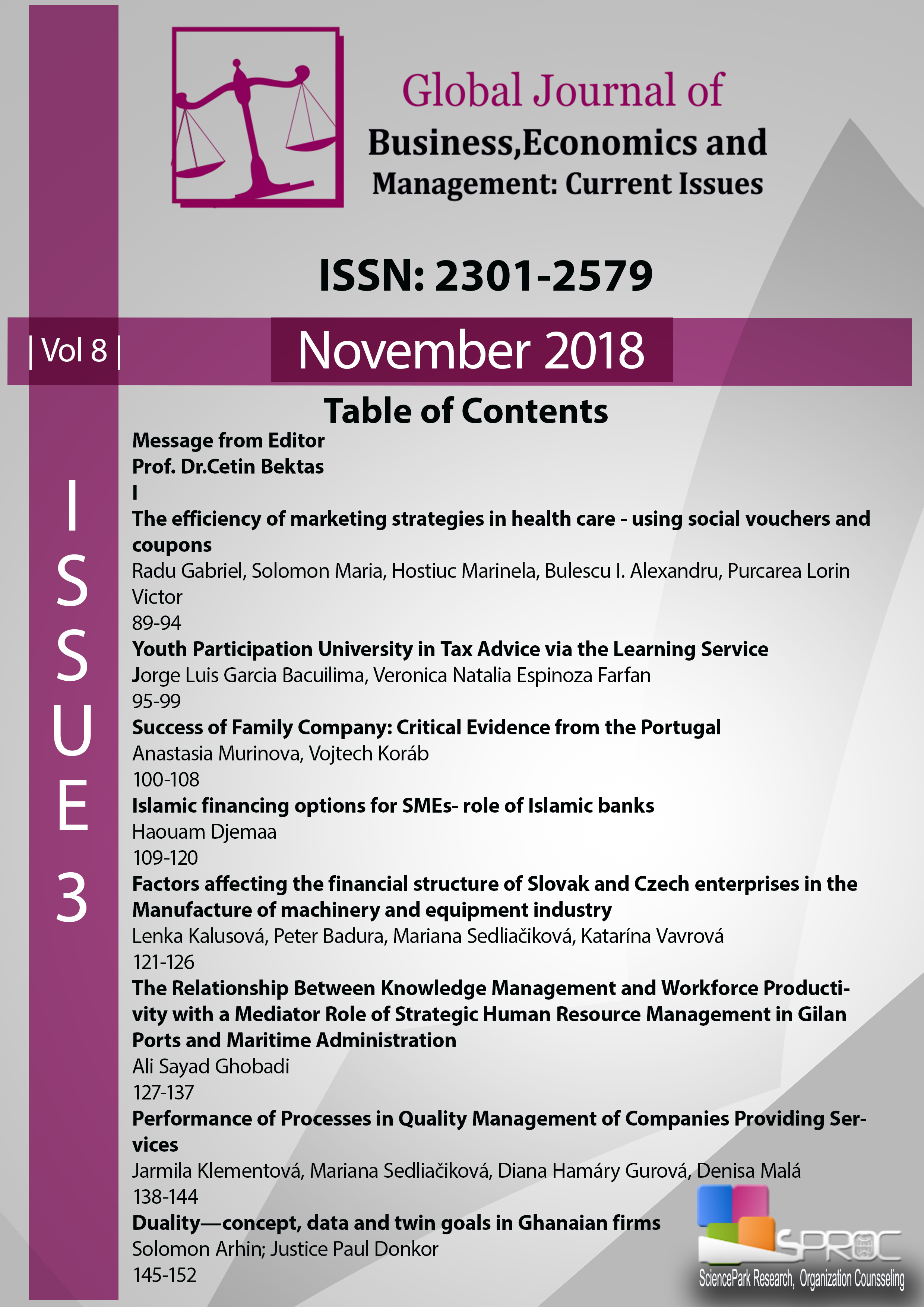Duality—concept, data and twin goals in Ghanaian firms
Main Article Content
Abstract
Abstract :
Pragmatically, there has been hot debate on the new wave of strategic governance in duality as a concept from Business perspective. Critics argue sharply and blamed Management inappropriately for utilizing duality model to achieve corporate goals. Nevertheless, there is a school of thought that believes that duality model negatively or positively impacts the corporate performance especially at the top-level of management hierarchy. Few of the authors think it has no impact whether the duality model is adopted or not by Top-level management. The purpose of this study examines the duality model as a concept and its dual goals from the Ghanaian context. Specifically this study focus on measurement of the impact of duality model behavior of organizations in Ghanaian community. This study also aims to measure the application of the duality concept in relation to the three models : Technology acceptance model (1999), agency theory by Ullmann (1985), institutional theory by Dominic (2010).This research uses primary data from thirty prominent organizations in Ghana, which have used the model in duality roles .Questionnaire were sent to top level management in these organizations to collect Primary data .Responses were categorized and analysis was performed on data that was collected , to determine data reliability and usefulness. The result indicates that duality model is perceived to be easy and less expensive to use and most of the managers in duality role perform better than individual managers in separate roles. Based on the research findings, managerial implications and directions for future research are discussed.
Downloads
Article Details
The Global Journal of Business Economics and Management: Current Issues is an open-access journal. The copyright holder is the author or authors. Licensee: Birlesik Dunya Yenilik Arastirma ve Yayincilik Merkezi, North Nicosia, Cyprus. All articles can be downloaded free of charge. Articles published in the Journal are Open-Access articles distributed under the CC-BY license [Attribution 4.0 International (CC BY 4.0)].

